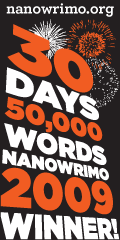
A totally independent nation that considers itself a separate continent (although some maps in other parts of the world group it with its massive neighbor). It is a little larger than France and has a population of about six million.
Now, about the colors on the map...
Blue = Fresh water
Dark Green = Coniferous forests
Light Green = Plains
Sandy Brown = ...Rocky areas rich in minerals (OFFICIAL TERMINOLOGY)
White = Tundra
Red Brown = Industrialized areas
So, as you can see, population is concentrated in the southern part of Estoria (and for obvious reasons; the north is largely uninhabitable). The black dots are cities; the one with a white star is the country's capital, Nolanburg. We'll talk more about the city later.
Estoria is named for the man who discovered the island, Lewis Estor. Although the north was perpetually frozen, the south had rich soil and was soon found to contain large amounts of coal and precious metals. Population booms occurred and the Estorians eventually seceded from their mother country. The steam engine was invented and steam-powered technology made vast advancements (thanks to the large supply of coal). Eventually, other countries declared war on Estoria and tried to seize control of the coal supply. After numerous bloody battles, Estoria closed their borders. Five hundred years later, they are still closed.
The most common crop in Estoria is wheat. Bread is a common dietary staple, even among the poor. Because there is little space to raise livestock, meat is a delicacy.
Some farmers and ranchers wish to expand their fields and have petitioned to be allowed some old mine areas to try and turn them into fertile growing land. The central government has denied all of these petitions, saying that the minerals in these mines are far too valuable to go selling away. The big secret? There's no coal left. What's being found today are just tiny traces.
Maybe it's for the better. Five hundred plus years of steam technology has worn on the country. Cities and other industrialized areas are dirty. Glimpses of the sun are rare as the sky has mostly been covered with a gray mist. If you're a rich woman, your average life span is 40; life span only shortens from there. Consumption is a particularly rampant disease.
On the other hand, what will happen to civilization when the fuel runs out...?
Tomorrow, we explore that culture a little more.





ooh, I'm liking this. you're giving me ideas to develop countries better...I haven't really done much of that before!
ReplyDelete